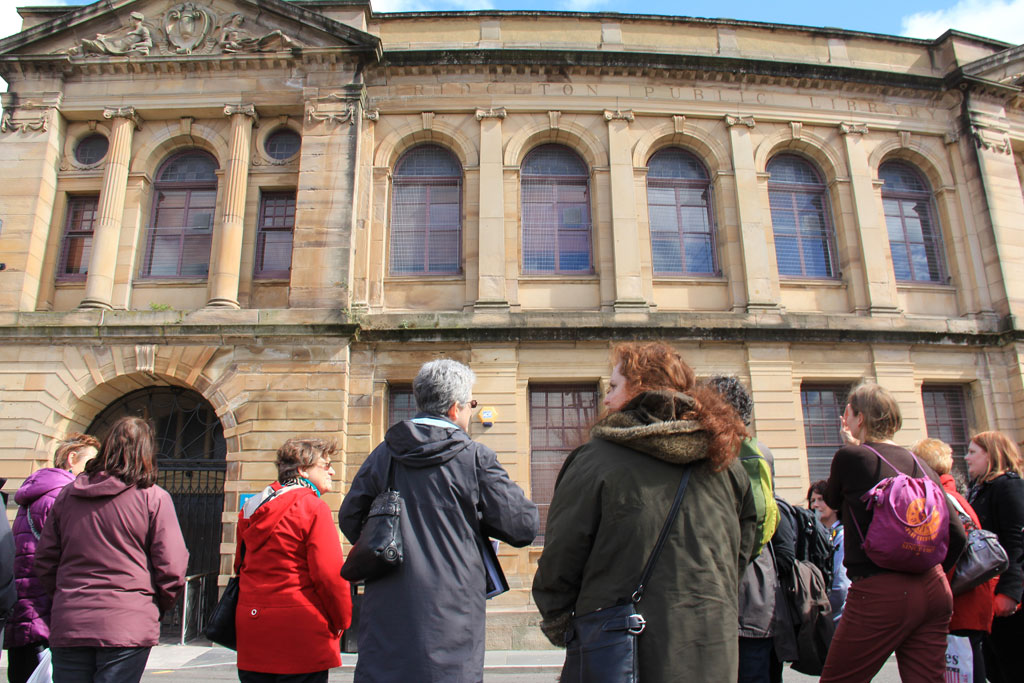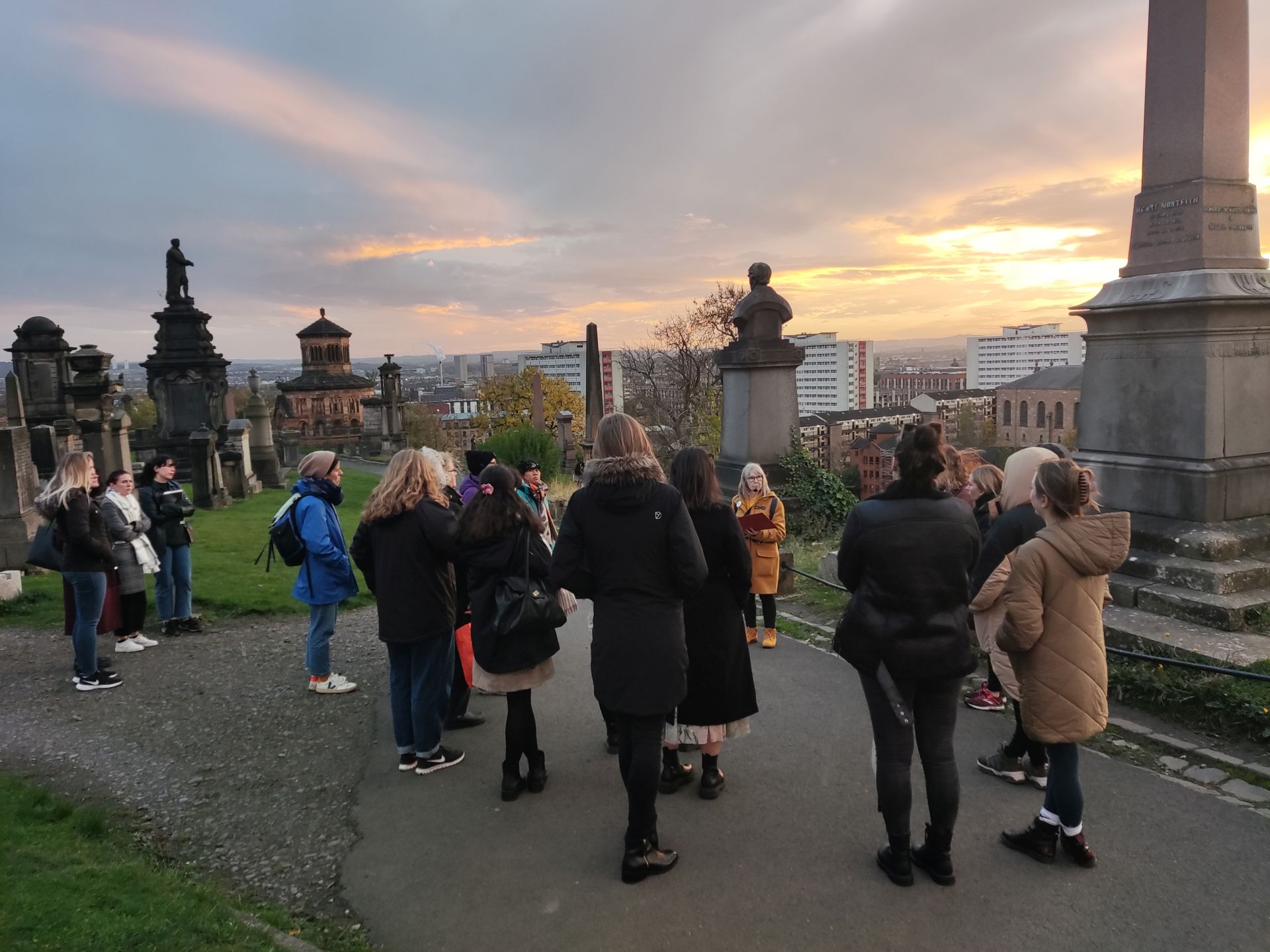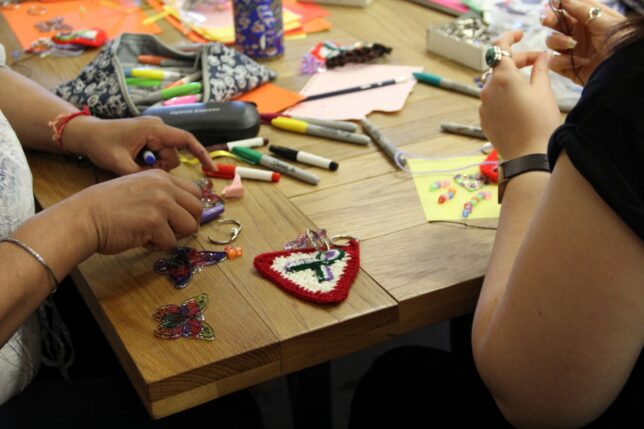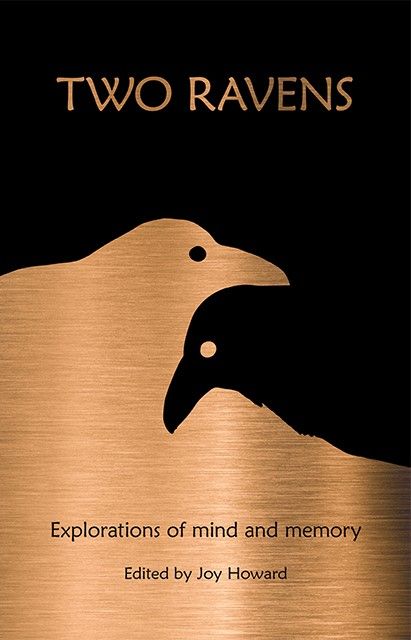Glasgow Women’s Library (GWL) has a rich history and connection to LGBTQ+ activism, specifically lesbian activism. Within GWL’s collection of photographic material there are photographs of the Lesbian Avengers organising including people painting a large Lesbian Avengers banner, GWL members in Lesbian Avengers t-shirts, and images of an informative board made on Section 28 that features a placard with the Lesbian Avengers symbol on it.
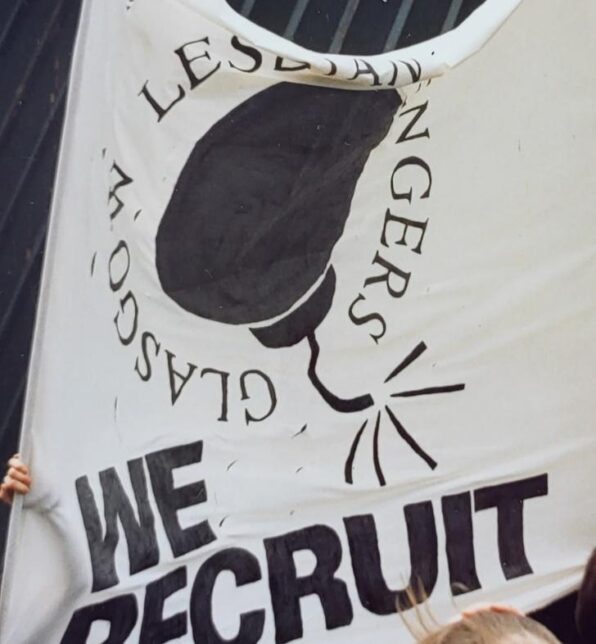
According to the Lesbian Avengers website, the group was started in New York City in 1992 “as a direct action group focused on issues vital to lesbian survival and visibility”. The idea of visibility is very evident within GWL’s collection of photographic material. Through taking photographs of themselves setting up the Glasgow chapter, a vital piece of lesbian organising history has been saved in the archive. The Lesbian Avengers “developed a civil rights organizing project that championed “out” grassroots activism, that not only fought homophobic initiatives, but worked to train activists for the long term”. Again, this commitment to “out” activism is palpable throughout the collection. Their dedication to being open about their sexuality is impressive due to Section 28.
In the late 1980s, the UK government introduced Section 28 which prohibited the ‘promotion’ of homosexuality. This clause, alongside the impact of the AIDs crisis on public opinion regarding homosexuality, likely resulted in many staying in the closet. The Lesbian Avengers pushed back against this, demanding to be heard and understood as out and proud. Photographs emphasise this commitment through depicting them leafleting as the Lesbian Avengers to attending pride marches as the library.
In 1995, the Glasgow Lesbian Avengers campaigned against Glasgow’s Mitchell Library due to the Director of Libraries decision to ban the inclusion of a LGBTQ+ paper due to restrictions put in place by Section 28. This not only connects to the theme of LGBTQ+ but also the theme of access. The Lesbian Avengers started with the goal of moving away from inaction, they wanted to be at protests, out in the streets as it were. In the collection of GWL’s photographic material there is a slide depicting an information board on Section 28, part of that board pictures a Glasgow Lesbian Avengers placard that reads “free our libraries from Section 28”. The Glasgow Lesbian Avengers logo and the organisation’s common saying of “we object!” are also visible on the placard. As much of the Lesbian Avengers work was around visibility and direct action, it comes as no surprise that the Glasgow chapter would protest the restrictions put on LGBTQ+ material at the Mitchell. Their protest contributed to raising awareness of the dangers of Section 28.
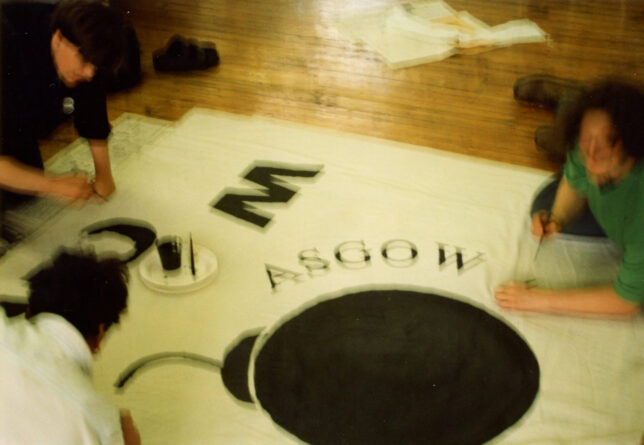
The images of people painting the banner on the floor of the Trongate space, especially stands out to me. Art, craft, and creativity are at the heart of grassroots activism, and perhaps most specifically Lesbian and feminist activism. Sitting at home and making your own posters, banners, and placards allows for full control over the message. Art has often played a significant role in activism, and often the opposite is true as well, with activism having a key role in art. The painting of the banner also heightens the connections of these movements to community. So often, activism speaks to a desire to get involved and that was at the core of the Lesbian Avengers, and GWL. As I discussed in my first blog post, GWL as a feminist space has always fostered community, and action.
GWL has held the Lesbian Archive since 1994 due to the closing of its previous home due to council cuts. As an alternative feminist space, GWL highlights the importance of prioritising queer, feminist history. The voices of marginalised groups have too often been ignored and disregarded, and I think a rejection of the very practices that ignore those voices is what draws GWL and the Lesbian Avengers together. Both organisations, and those who were members of both cared about bringing marginalised voices to the forefront of activism, education, and politics.
During the 1990s when the Lesbian Avengers were starting out, certain depictions of lesbians were becoming more prominent in the media, specifically that of white, conventionally attractive, lesbians. This, alongside the depiction of lesbians in relation to the AIDs crisis, as Erin J. Rand points out “cast them [lesbians] as feminine nurturers rather than political activists. [They were] divorced from politics, AIDS, and militant activism.” (2013, p.126). This dichotomy of safe angel-like figures, or palatable lesbians created for a heterosexual gaze was what the Lesbian Avengers was pushing back against. As is seen on their website, the Lesbian Avengers actively chose activism and aimed to disrupt societal norms and ideas about lesbianism. This is shown in the photographs of the Glasgow chapter protesting outside the Mitchell, and stickering over adverts that depicted women in misogynistic ways.
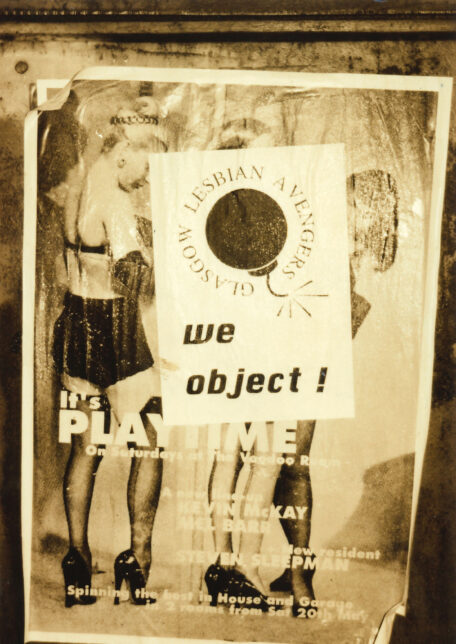
GWL started as a way to push back against women being ignored in Glasgow’s bid to be European City of Culture, 1990. Marginalised groups continuously have to push back against stereotypes and assumptions. Doing this out on the streets is at the core of both GWL and the Lesbian Avengers. Both organisations are rooted in visibility and so it comes as no surprise that the latter exists throughout the former’s collection of photographic material. From painting banners, to leafleting, to attending protests, the work done by the Lesbian Avengers and within a Glaswegian context was and still is vitally important. Its presence within the collection of photographic material and the Lesbian Archive allows its history and relevance to be preserved for future activists to learn from.

